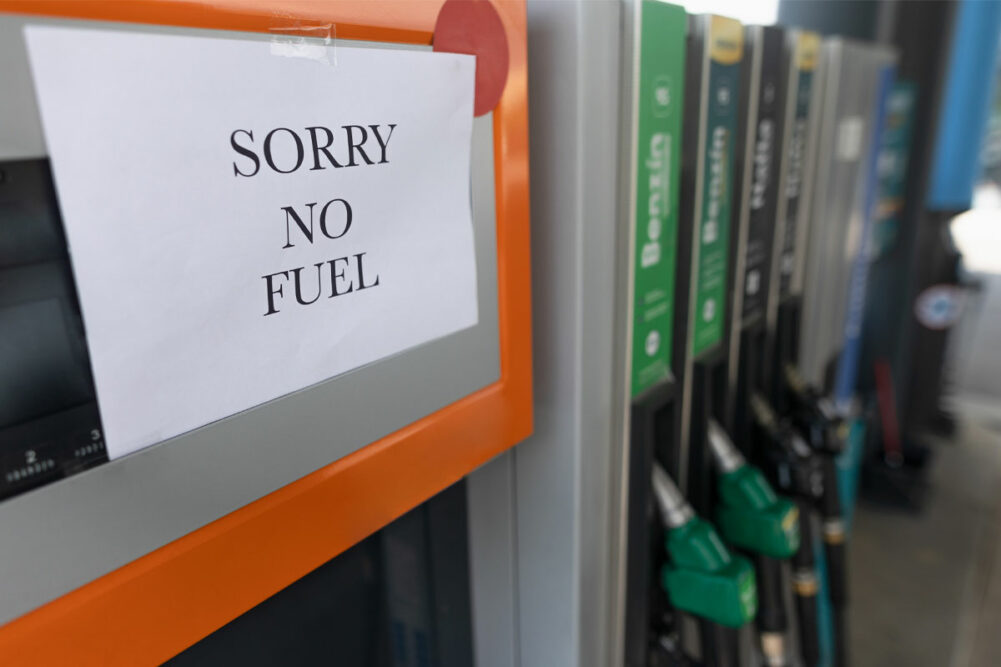KANSAS CITY — As if there aren’t enough challenges facing agriculture and food manufacturers — such as drought, war, a strong dollar, export competition, logistics and labor — now it appears the United States is facing the worst shortage in decades of diesel fuel, critical for running everything from farm tractors to trucks to locomotives and other industrial engines.
But is there really a diesel shortage?
The diesel fuel supply situation made national and social media headlines in late October after the US Energy Information Administration (EIA) reported inventories were the lowest for any month since 2008 and were the lowest for October specifically since the data series began in 1982.
The New York Times noted “diesel prices are a critical source of pain for the economy because they affect the cost of practically every product.”
Attention has been growing, including inaccurate reports on social media that appeared to boost fears that the United States would run out of diesel fuel in 25 days.
“I’d argue that the frequently cited ‘25-day’ timeline is misleading at best,” said Robbie Fraser, manager of global research and analytics, Schneider Electric, Louisville, Ky. “That figure comes from the days of cover provided by the amount of diesel in storage. The only way it becomes a realistic timeline is if all refineries ceased operations, which of course isn’t realistic at all. If we look at data from recent weeks and include refinery output, we’re looking closer to 9 to 12 months of supply. And with relatively small adjustments to our import/export balance, we could see a small supply surplus.”
Still, Mr. Fraser said supplies were tight heading into winter.
“The reality is diesel supply is tight, and this winter holds some additional upside given the record price of natural gas we’re likely to see in much of Europe and Asia,” Mr. Fraser said. “That doesn’t necessarily mean running out of fuel, but rather an environment where diesel is likely to continue outperforming crude and gasoline prices. In time, that will balance, particularly with a mild winter, but for now, fundamental support remains strong.”
The fall/winter is the most critical period of use of two of the three major distillates — diesel fuel and heating oil — with the third being jet fuel. Demand from the farm sector for diesel fuel shoots up during fall harvest, while demand from the residential sector is highest for heating oil during the winter.
The diesel fuel situation is complicated. News of a shortage prompted criticism that exports continued while the United States was “running out” of a critical fuel.
The bulk of US diesel is refined on the US Gulf coast and either distributed within the United States or exported. US refiners have been exporting more than 1 million barrels of distillates daily for nearly a decade.
Oilprice.com recently addressed the export issue, noting that in addition to the fact that it’s a financial decision whether refiners export distillates or sell them domestically, two other factors come into play. One major reason is the Jones Act requires products shipped between US ports must be moved by US vessels with US crews, sometimes making exports to South America or Europe more profitable than to US East Coast ports. Adding to the issue this year is that a shortage of diesel fuel in Europe due to the Russia-Ukraine war has increased the need for US diesel exports to that region.
Also since the war began, the United States has lost nearly 700,000 barrels per day of distillate imports from Russia, meaning the difference must be made up domestically (while production capacity has been declining in recent years) or by imports from countries other than Russia.
The other major reason for continuing exports is some diesel being exported doesn’t meet higher US standards for low-sulfur content, which costs more to refine.
“Retail heating oil and diesel prices will continue to average more than $5 per gallon for the rest of 4Q ‘22,” the EIA said in its Nov. 8 Short-Term Energy Outlook. “We expect a slightly contracting US economy will reduce distillate prices in the first half of 2023. However, the EU’s ban on seaborne imports of petroleum products from Russia creates supply uncertainty for distillate markets in early 2023.”
Further, the EIA forecast US homes using heating oil (mainly in the mid-Atlantic and Northeast) will pay 45% more this winter than last winter because of higher prices and higher consumption based on forecast colder temperatures this winter. Residential heating oil prices were a record-high $5.91 per gallon the week of Nov. 7.
The EIA said US on-highway diesel prices were expected to average $5.09 per gallon in 2022, up from $3.29 per gallon in 2021, and then drop to $4.65 per gallon as the 2023 average. On-highway diesel prices averaged $5.313 per gallon on Nov. 14, down 9% from a record-high $5.816 per gallon on June 19 but up 42% from a year earlier. Higher diesel prices typically are passed on by carrier to shippers as fuel surcharges.
Despite some media reports, energy experts indicate the United States isn’t going to run out of diesel fuel and heating oil, although prices will be high.





